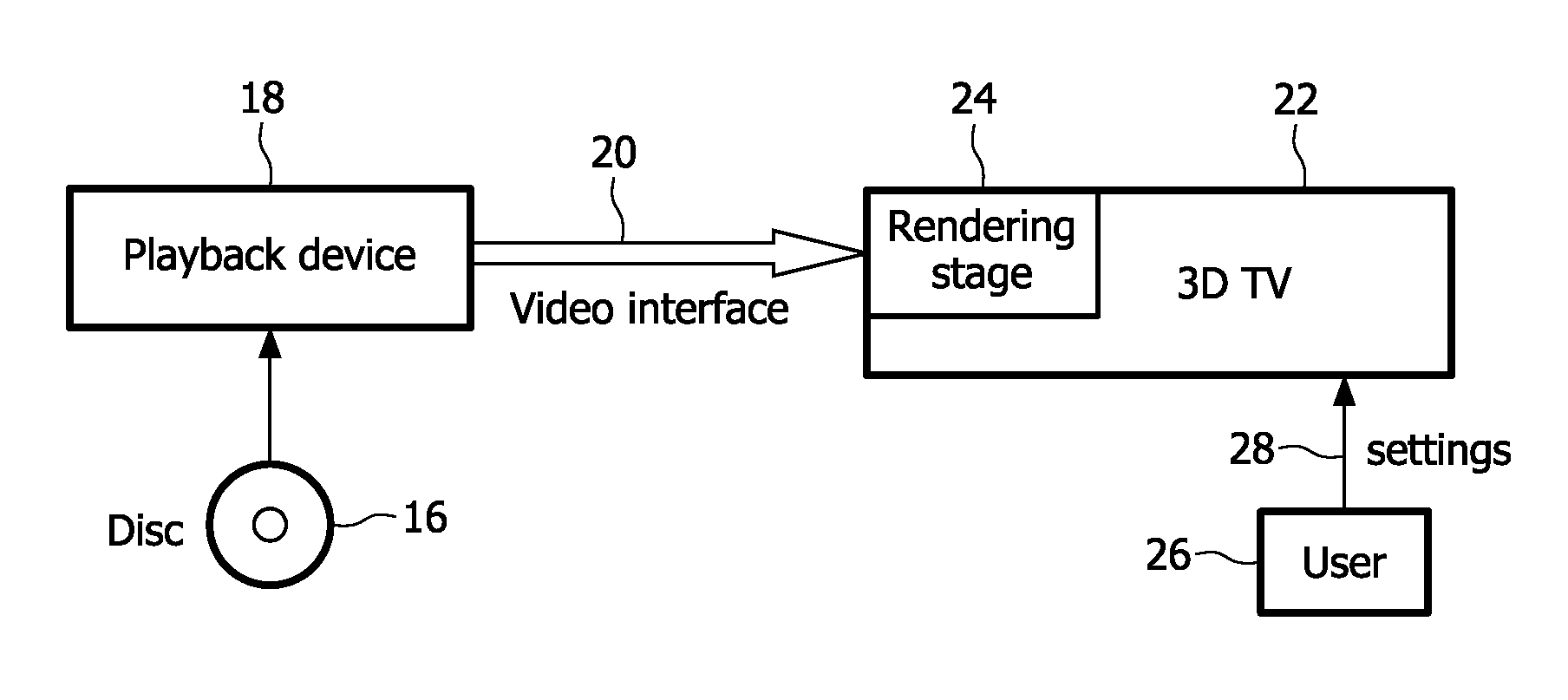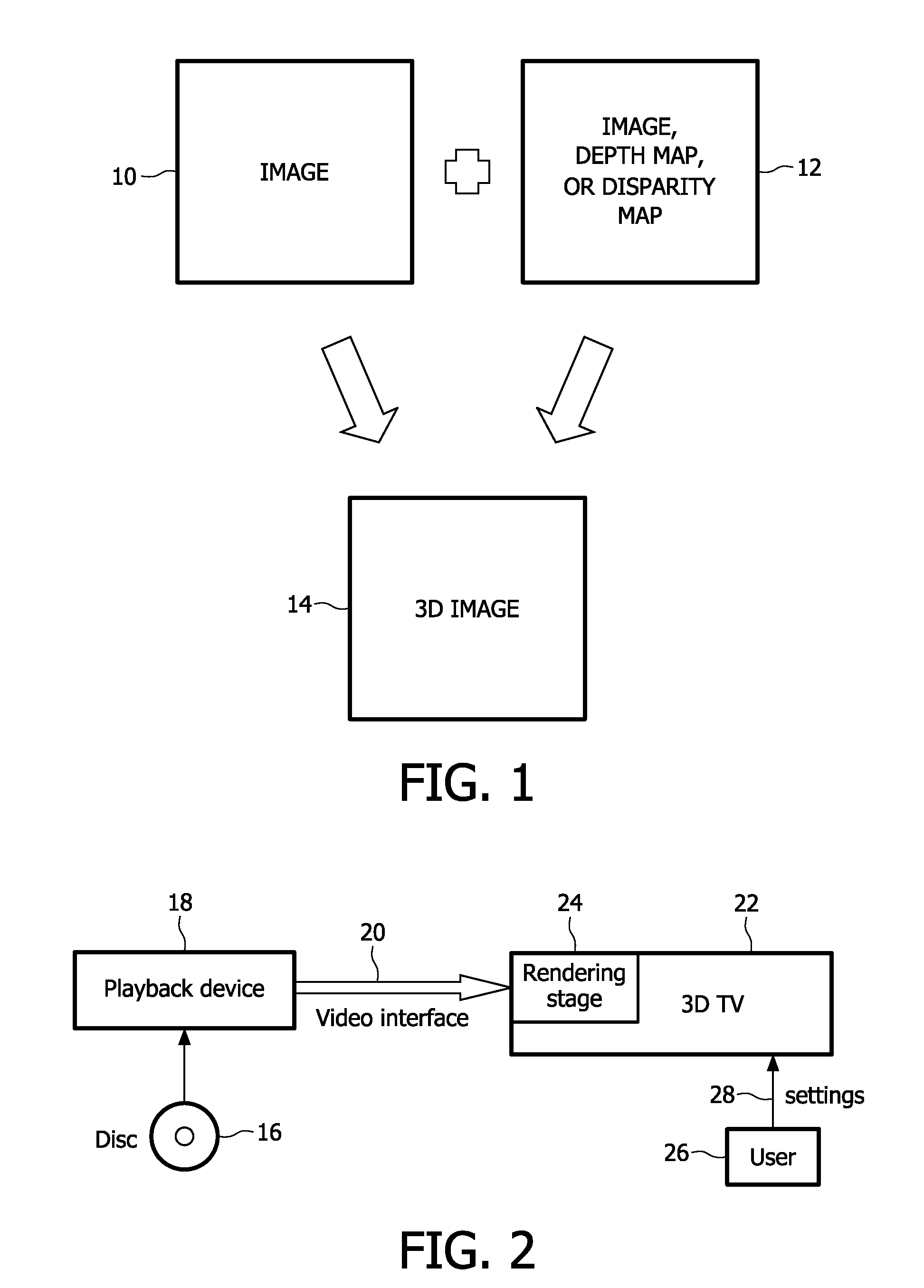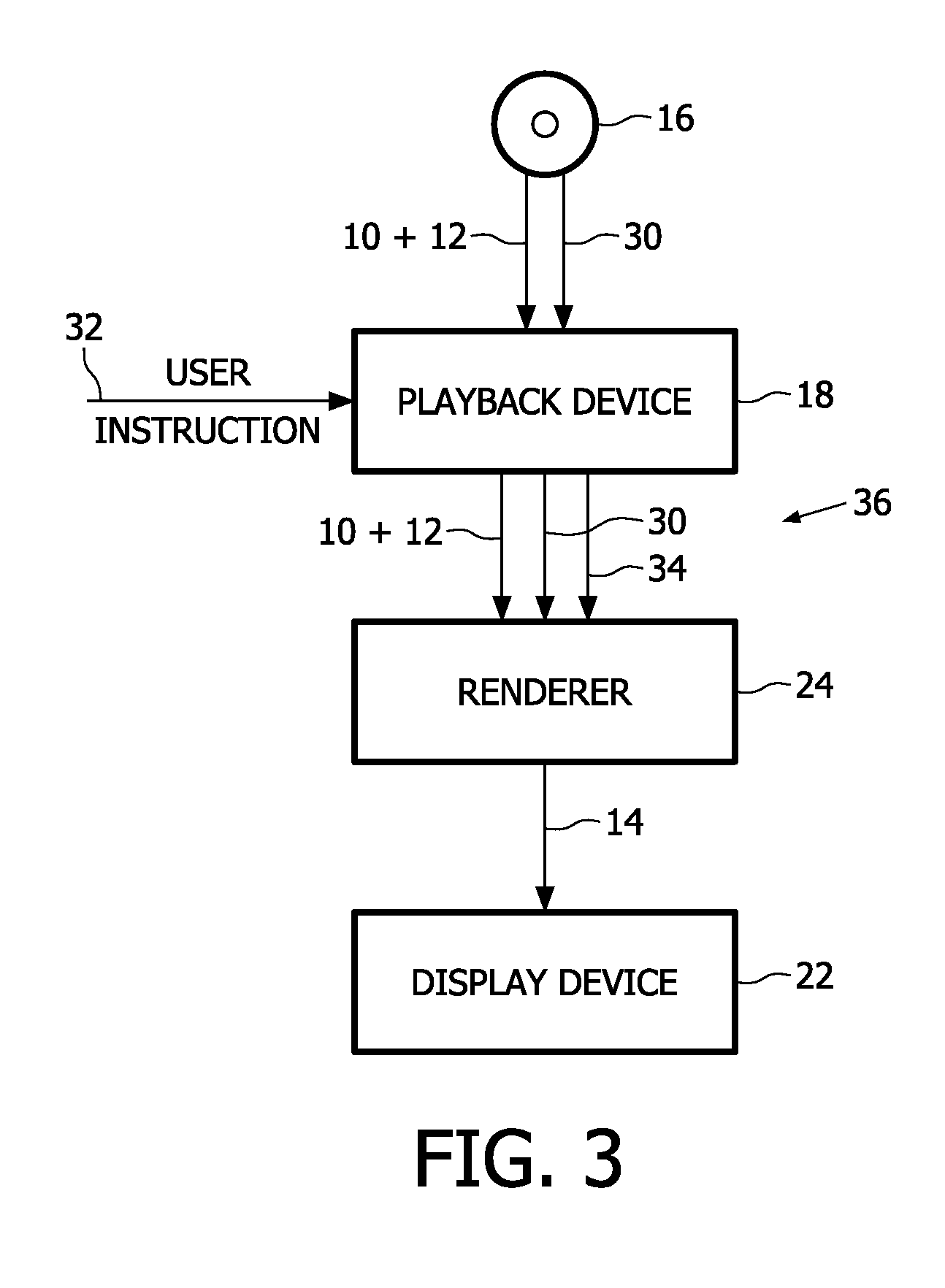3D display handling of subtitles
a three-dimensional, image signal technology, applied in the field of three-dimensional (3d) image signal creation and rendering, can solve the problems of headaches and other symptoms associated with motion sickness, accommodation convergence mismatch, visual fatigue, etc., and achieve low amount of interest, high frame resolution, and improved end result quality
- Summary
- Abstract
- Description
- Claims
- Application Information
AI Technical Summary
Benefits of technology
Problems solved by technology
Method used
Image
Examples
Embodiment Construction
[0039]The creation of a three-dimensional image is illustrated schematically in FIG. 1. Essentially, whether the final rendering display device is autostereoscopic, or runs on stereo pairs (requiring the user to wear special glasses), the process is the same. A first image component 10 and a second component 12 are provided for creating a three-dimensional image 14. The second component 12 in combination with the first image component 10 are processed together to make the final output 14. In all systems, the first image component 10 is a conventional two-dimensional image frame of any suitable standard. In the stereo pair system, the second component 12 is also an image, and in the autoseteroscopic systems, the second component 12 is a depth map, or a disparity map.
[0040]It is important to understand that the final output 14 is not necessarily a single frame. For example, in the stereo pair system (where the image 10 is for the left eye, and the image 12 is for the right eye), then ...
PUM
 Login to View More
Login to View More Abstract
Description
Claims
Application Information
 Login to View More
Login to View More - R&D
- Intellectual Property
- Life Sciences
- Materials
- Tech Scout
- Unparalleled Data Quality
- Higher Quality Content
- 60% Fewer Hallucinations
Browse by: Latest US Patents, China's latest patents, Technical Efficacy Thesaurus, Application Domain, Technology Topic, Popular Technical Reports.
© 2025 PatSnap. All rights reserved.Legal|Privacy policy|Modern Slavery Act Transparency Statement|Sitemap|About US| Contact US: help@patsnap.com



